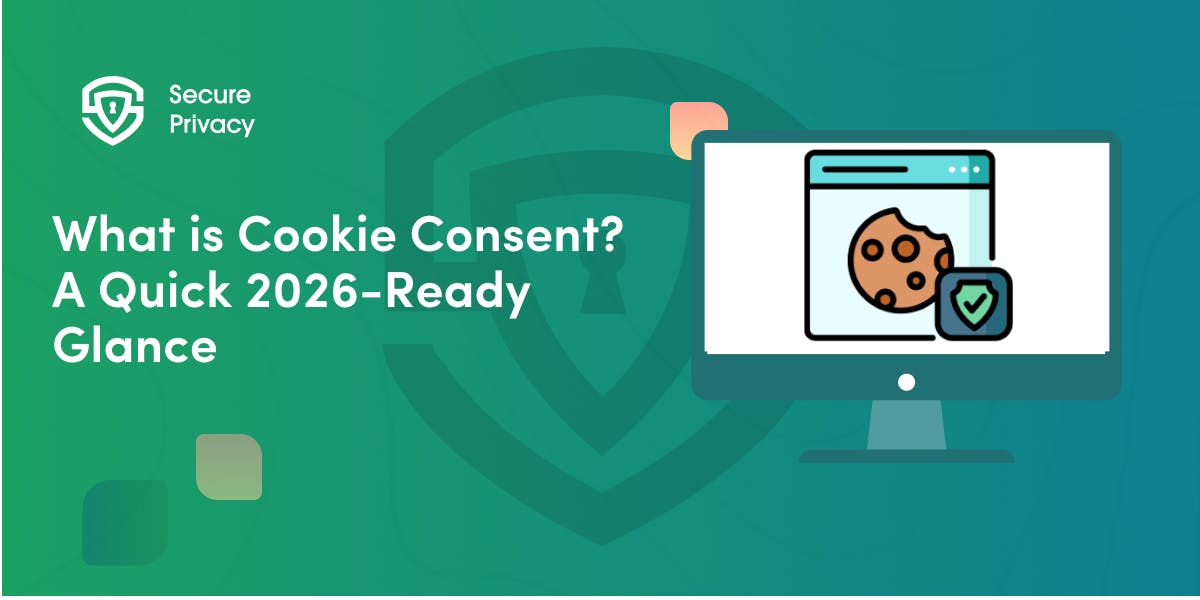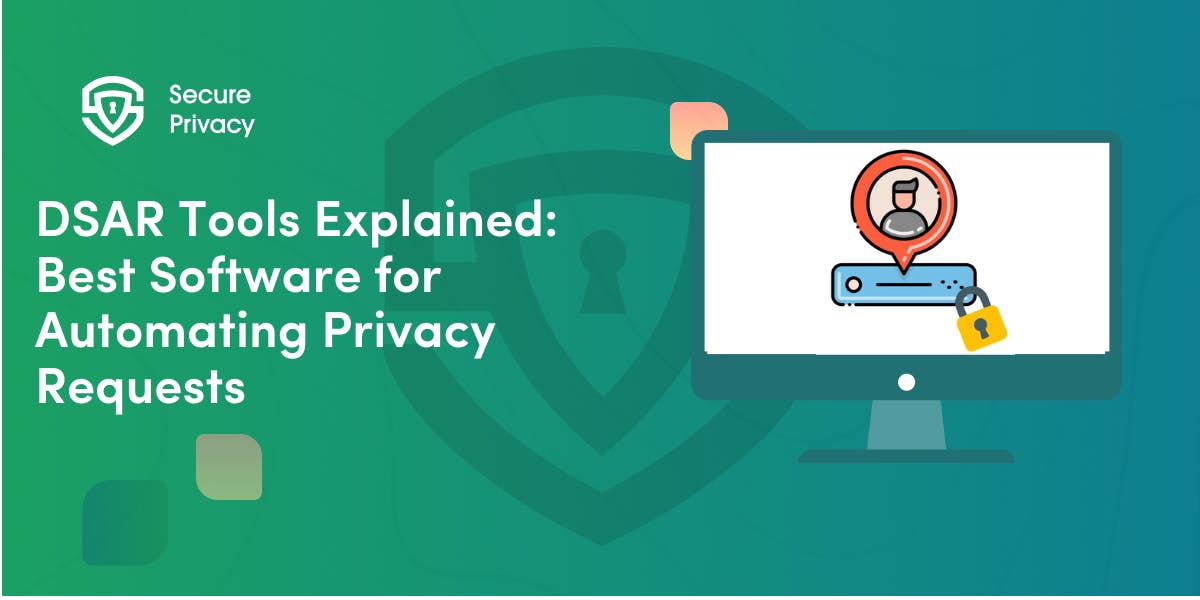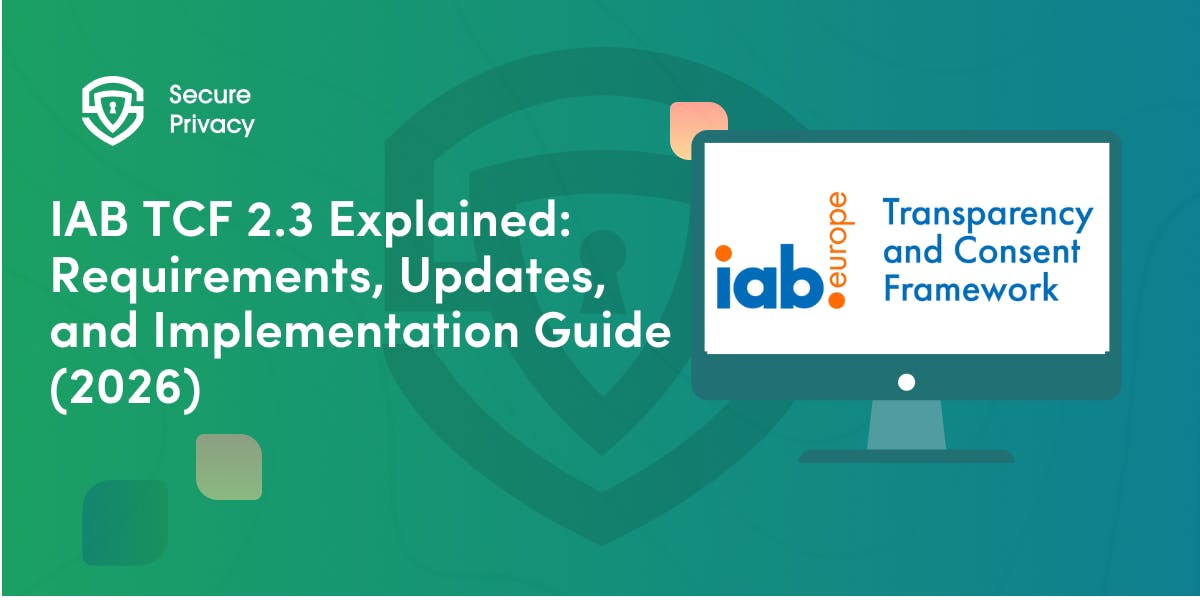Digital Marketing Consent Attribution Tracking: Complete Guide for Privacy-Compliant Campaign Measurement
Your marketing measurement is broken.
Traditional tracking models assume universal consent, but 40% of users now reject cookies, creating massive blind spots in your conversion data. Meanwhile, privacy regulations demand compliance while marketing teams still need accurate ROI measurement to justify budget allocations.
Digital marketing consent attribution tracking bridges this gap by creating sophisticated measurement frameworks that respect user privacy choices while maintaining the accuracy essential for campaign optimization and performance marketing.
In this comprehensive guide, you'll discover how consent-aware measurement models work, implement privacy-compliant tracking strategies across multiple channels, and leverage advanced measurement techniques that satisfy both regulatory requirements and marketing performance needs.
What Is Consent-Aware Tracking?
Consent-aware tracking is a privacy-compliant measurement methodology that adjusts models based on individual user consent preferences. Unlike traditional approaches that assume uniform tracking capabilities across all users, this methodology acknowledges that users have varying consent status for data collection, requiring sophisticated modeling to maintain measurement accuracy.
The system operates by segmenting users based on their consent choices, applying different measurement techniques for consented versus non-consented audiences, using machine learning models to estimate performance for data gaps, and maintaining strict compliance with privacy regulations including GDPR, CCPA, and emerging global privacy frameworks.
This approach recognizes that privacy compliance and marketing measurement aren't mutually exclusive objectives. By building consent awareness directly into measurement models, marketers can maintain performance visibility while demonstrating respect for user privacy preferences and regulatory requirements.
The fundamental difference from standard approaches lies in data handling methodology. Traditional models collect comprehensive behavioral data from all users, while consent-aware systems create parallel measurement frameworks that adapt based on individual privacy choices without compromising overall campaign insights.
Regulatory Drivers Reshaping Marketing Measurement
GDPR Requirements for Lawful Tracking
Under GDPR, marketing measurement must demonstrate lawful basis for personal data processing. Consent represents the most common lawful basis for marketing analytics, but it must be freely given, specific, informed, and unambiguous. This means users must actively opt-in to tracking, and their consent choices directly impact data availability.
GDPR Article 7 requires that consent withdrawal be as easy as consent provision, meaning users can change their tracking preferences at any time. Measurement systems must dynamically adjust to these preference changes while maintaining historical data accuracy and compliance documentation.
The regulation also mandates data minimization, meaning measurement systems can only collect data necessary for specified marketing purposes. This requirement forces more targeted data collection strategies and eliminates the broad behavioral tracking that powered traditional models.
CCPA and CPRA Opt-Out Impacts
California's privacy laws create different but equally challenging requirements for measurement tracking. The "Do Not Sell" framework means users can opt out of data sharing with third parties, directly impacting cross-platform measurement and audience targeting capabilities.
CPRA's expansion includes sensitive personal information protections that affect demographic and behavioral targeting used in measurement models. Marketers must implement opt-out mechanisms while maintaining accuracy through alternative measurement methodologies.
The global expansion of CCPA-style legislation means measurement systems must accommodate opt-out preferences across multiple jurisdictions, each with slightly different requirements for user rights and business obligations.
ePrivacy and Cookie Law Evolution
European ePrivacy regulations continue evolving toward stricter consent requirements for electronic communications tracking. These regulations specifically impact cookie-based measurement systems and require explicit consent for non-essential tracking technologies.
The anticipated ePrivacy Regulation will further restrict tracking capabilities, potentially requiring consent for all marketing analytics cookies. Measurement systems must prepare for scenarios with significantly reduced cookie availability across European audiences.
National implementations of ePrivacy directives vary across EU member states, creating complex compliance requirements for multi-market campaigns and measurement strategies.
How Consent Impacts Marketing Measurement
Multi-Touch Analysis Under Consent Restrictions
Traditional multi-touch analysis relies on comprehensive user journey tracking across multiple devices and platforms. Consent restrictions create gaps in this tracking, particularly affecting cross-device analysis and long conversion cycles.
When users consent to tracking on some platforms but not others, measurement models must account for partial journey visibility. This requires sophisticated modeling to estimate the impact of unmeasured touchpoints while maintaining statistical accuracy.
Machine learning algorithms now incorporate consent status as a feature in modeling, adjusting weight distributions based on data availability and user segment characteristics. This approach maintains accuracy while respecting individual privacy choices.
Missing Data Reconciliation
Consent-based tracking must address systematic data gaps created by users who decline tracking. These gaps aren't random—they often correlate with user demographics, privacy consciousness, and engagement patterns that impact conversion likelihood.
Advanced platforms use probabilistic modeling to estimate missing touchpoint impacts based on observed behavior among similar consenting users. These models account for selection bias and demographic skew in consent decisions.
Cohort-based analysis helps identify patterns in consent behavior and conversion rates, enabling more accurate modeling for non-consented user segments while maintaining individual privacy protections.
Platform Integration Challenges
Each advertising platform handles consent differently, creating complexity across Google Ads, Facebook, Microsoft Advertising, and other channels. Consent signals must be synchronized across platforms while respecting platform-specific privacy policies.
Google Consent Mode v2 provides a framework for maintaining measurement with limited data, but requires careful implementation to ensure compliance across different regulatory jurisdictions. Meta's Conversions API offers similar capabilities with different technical requirements.
Cross-platform measurement becomes particularly challenging when users consent to tracking on some platforms but not others, requiring sophisticated data modeling to maintain campaign performance visibility.
Technical Implementation Strategies
Consent Management Platform Integration
Modern attribution systems integrate directly with Consent Management Platforms (CMPs) to receive real-time consent status updates. This integration ensures attribution models immediately reflect user privacy preference changes without manual intervention.
The integration typically involves implementing event listeners that respond to consent changes, updating attribution tracking configurations based on current consent status, enabling privacy-preserving measurement modes when consent is declined, and synchronizing consent preferences across the entire marketing technology stack.
API integration enables automated consent synchronization across marketing technology stacks, ensuring consistent attribution treatment based on current user preferences rather than historical consent status.
Google Consent Mode v2 Implementation
Google Consent Mode v2 represents the industry standard for consent-aware attribution. When users decline tracking cookies, Consent Mode automatically adjusts tag behavior while enabling conversion modeling to recover attribution data.
The system uses machine learning to estimate conversions that would have been measured with full tracking consent. Early implementation data shows conversion modeling recovers approximately 70% of ad-click-to-conversion journeys lost due to cookie consent declines.
Implementation involves setting default consent states to denied for all non-essential purposes, configuring consent updates based on CMP choices, enabling enhanced measurement parameters for improved modeling accuracy, and establishing proper consent signal timing to ensure accurate data collection.
Server-Side Attribution Implementation
Server-side attribution reduces reliance on browser-based tracking by collecting conversion data directly from owned digital properties. This approach maintains attribution capability regardless of cookie consent status while improving data accuracy and reducing privacy concerns.
Server-side implementations typically use first-party data collection combined with privacy-preserving identifiers to maintain attribution continuity. This method proves particularly valuable for e-commerce and lead generation businesses with substantial owned media properties.
The implementation involves creating consent-aware attribution classes that check user consent status before data collection, implementing full attribution tracking for consented users while using privacy-preserving methods for non-consented users, and maintaining separate data processing workflows based on individual consent preferences.
First-Party Data Attribution
First-party data strategies provide the foundation for consent-independent attribution by leveraging directly collected customer information. This approach includes email addresses, customer IDs, and other voluntarily provided identifiers that enable attribution tracking with explicit user permission.
Customer Data Platforms (CDPs) increasingly serve as the central hub for first-party attribution, combining consent status with customer journey data to provide comprehensive measurement while maintaining privacy compliance.
Advanced implementations use hashed email addresses and privacy-preserving identifiers to enable cross-platform attribution without exposing individual user information to third-party platforms.
Best Practices for Privacy-Compliant Attribution
Granular Consent Collection and Documentation
Effective consent attribution requires granular consent collection that specifically addresses analytics and attribution use cases. Generic consent choices don't provide sufficient specificity for sophisticated attribution modeling.
Best practices include separating consent for different attribution purposes (website analytics, advertising attribution, cross-device tracking), providing clear explanations of how attribution data will be used, maintaining detailed records of consent choices and changes, and implementing easy consent modification mechanisms.
Documentation requirements extend beyond simple consent records to include processing purposes, data retention schedules, third-party sharing arrangements, and user rights fulfillment procedures.
Attribution Segmentation by Consent Status
Advanced attribution strategies segment audiences based on consent preferences to optimize measurement accuracy and campaign performance. This segmentation enables different attribution models for consented versus non-consented users while maintaining overall campaign insights.
Segmentation strategies typically include full-consent users receiving comprehensive attribution tracking, limited-consent users receiving privacy-preserving measurement, and no-consent users contributing to aggregate performance modeling without individual tracking.
This approach enables marketers to understand performance differences between consent segments while optimizing campaigns for both privacy-conscious and tracking-accepting audiences.
Real-Time Consent Synchronization
Attribution accuracy depends on real-time consent status synchronization across all marketing platforms and measurement systems. Delayed consent updates can create compliance violations and attribution inaccuracies.
Implementation requires automated consent distribution from CMPs to attribution platforms, real-time tag management updates based on consent changes, automated suppression of non-consented data collection, and comprehensive audit trails for consent-based attribution decisions.
Modern marketing technology stacks use webhooks and API integration to ensure consent changes propagate immediately across all connected systems.
Tools and Platform Solutions
Consent-Aware Attribution Platforms
Leading attribution platforms now offer built-in consent awareness capabilities that automatically adjust measurement methodologies based on user privacy preferences. These platforms integrate directly with popular CMPs to receive real-time consent status updates.
Enterprise solutions like Google Analytics 4, Adobe Analytics, and specialized attribution platforms provide consent mode compatibility, privacy-preserving measurement options, automated compliance reporting, and machine learning-powered gap filling for non-consented data.
Emerging platforms focus specifically on privacy-first attribution, offering innovative approaches like differential privacy, federated learning, and cryptographic techniques that enable measurement without individual data exposure.
CMP Integration Capabilities
Modern Consent Management Platforms provide sophisticated attribution integration capabilities that extend beyond basic consent collection. These platforms offer real-time consent APIs, attribution platform connectors, automated compliance documentation, and advanced consent analytics.
Integration features typically include webhook delivery for consent changes, pre-built connectors for major attribution platforms, consent-based audience segmentation, and comprehensive reporting for privacy compliance audits.
Google Tag Manager and Consent Mode
Google Tag Manager serves as the primary implementation vehicle for consent-aware attribution through its advanced consent mode capabilities. The platform provides sophisticated tag firing controls based on consent status while maintaining measurement capability through conversion modeling.
Advanced GTM implementations use custom templates for consent-aware tag management, server-side tagging for enhanced privacy protection, automated consent status monitoring, and comprehensive debugging tools for consent-based attribution troubleshooting.
Measuring Success in Privacy-Compliant Attribution
Key Performance Indicators
Success metrics for consent attribution extend beyond traditional conversion measurement to include privacy compliance indicators, consent rate optimization, attribution accuracy under privacy constraints, and user trust measurements.
Essential metrics include consent rate by traffic source and campaign, attribution coverage percentage across consent segments, conversion modeling accuracy compared to baseline measurements, and compliance audit success rates.
Advanced measurement includes user lifetime value analysis by consent status, privacy preference stability over time, and campaign performance optimization opportunities within consent constraints.
Attribution Model Validation
Consent-aware attribution models require ongoing validation to ensure accuracy and compliance. This validation includes statistical testing of modeled versus observed conversions, bias analysis in consent decisions, and performance comparison across different privacy scenarios.
Validation methodologies use holdout testing with consented users, cross-validation with first-party data sources, and regular model retraining based on evolving consent patterns and user behavior.
Future of Consent-Aware Attribution
AI-Powered Privacy-Preserving Measurement
Artificial intelligence increasingly enables sophisticated attribution modeling with minimal individual data exposure. Machine learning algorithms can identify attribution patterns while maintaining user anonymity through differential privacy and federated learning approaches.
Future developments include automated consent optimization that maximizes both privacy compliance and measurement accuracy, predictive modeling for consent behavior and attribution impact, and advanced privacy-enhancing technologies that enable measurement without data collection.
Industry Standardization
The attribution industry is moving toward standardized approaches for consent-aware measurement. Industry organizations are developing frameworks for privacy-preserving attribution that work across platforms and regulatory jurisdictions.
Emerging standards include unified consent signal formats, cross-platform attribution protocols, privacy-preserving measurement APIs, and standardized metrics for evaluating attribution accuracy under privacy constraints.
How Secure Privacy Delivers Marketing Attribution Excellence
Marketing teams choose Secure Privacy for comprehensive consent management that seamlessly integrates with attribution platforms while ensuring bulletproof privacy compliance. Our solution provides real-time consent synchronization across your entire marketing technology stack, enabling accurate attribution measurement while respecting user privacy choices.
Our platform offers native integration with Google Consent Mode v2, Meta Conversions API, and leading attribution platforms, ensuring your campaigns maintain measurement capability regardless of consent decisions. Unlike basic CMPs that only collect consent, Secure Privacy provides the sophisticated attribution integration that modern performance marketing requires.
The platform's advanced analytics provide detailed insights into consent impact on attribution accuracy, enabling data-driven optimization of both privacy practices and campaign performance while maintaining comprehensive compliance documentation for regulatory requirements.
Frequently Asked Questions
How does consent impact attribution accuracy?
Consent restrictions typically reduce attribution data volume by 30-40% but can be largely offset through conversion modeling and machine learning techniques. While individual user tracking decreases, aggregate measurement accuracy remains high through advanced statistical modeling that accounts for consent bias and demographic patterns.
What's the difference between Google Consent Mode v1 and v2?
Consent Mode v2 introduces enhanced parameters including ad_user_data and ad_personalization that provide more granular control over advertising measurement. V2 also offers improved conversion modeling accuracy and expanded support for different consent scenarios, making it mandatory for EU audiences since March 2024.
Can I still do cross-device attribution without cookies?
Cross-device attribution remains possible through first-party identifiers like email addresses, customer IDs, and privacy-preserving techn6iques. While browser-based cross-device tracking becomes limited, logged-in user experiences and probabilistic modeling enable continued cross-device measurement for consented users.
How do I handle attribution for users who don't consent?
Non-consenting users contribute to attribution through aggregated modeling that doesn't track individuals. Platforms like Google use machine learning to estimate conversion patterns based on similar consenting users, providing statistical attribution insights without individual data collection.
What compliance documentation do I need for consent attribution?
Essential documentation includes consent collection records with timestamps and purposes, attribution methodology documentation showing privacy compliance, data processing agreements with attribution vendors, and audit trails demonstrating consent preference enforcement across all marketing platforms.
How often should I review consent attribution performance?
Monthly reviews are recommended to monitor consent rates, attribution accuracy, and compliance status. Quarterly deep analyses should evaluate model performance, consent optimization opportunities, and regulatory requirement changes that might impact attribution strategies.
What's the impact of consent on campaign optimization?
While consent restrictions reduce data granularity, machine learning optimization remains effective using available data and modeled insights. Campaign performance typically maintains 85-90% of previous optimization capability through enhanced modeling techniques and first-party data strategies.
How do I synchronize consent across multiple attribution platforms?
Modern CMPs provide real-time APIs and webhooks that automatically distribute consent status to connected attribution platforms. This synchronization ensures consistent consent enforcement across Google Analytics, Facebook, Adobe, and other measurement tools without manual intervention.
Ready to implement privacy-compliant attribution that maintains marketing performance? Get our Consent Attribution Implementation Guide including technical setup instructions, platform integration checklists, and compliance documentation templates. Schedule a demonstration to see how automated consent management can enhance both privacy compliance and attribution accuracy.
Get Started For Free with the
#1 Cookie Consent Platform.
No credit card required

What is Cookie Consent? A Quick 2026-Ready Glance
Your website loads. Cookies track users. But without proper cookie consent, you're violating GDPR — risking fines up to €20 million or 4% of global revenue. Cookie consent is the legally required mechanism by which websites obtain explicit user approval before deploying non-essential tracking technologies. This requirement stems from GDPR Article 4(11) and the ePrivacy Directive, mandating that consent must be freely given, specific, informed, and unambiguous.
- Legal & News

DSAR Tools Explained: Best Software for Automating Privacy Requests
You're drowning in data subject access requests. Manual searches through dozens of systems miss regulatory deadlines and expose organizations to fines starting at $2,500 per violation. The solution? DSAR tools — purpose-built software that automates the entire process of responding to data subject access requests, from intake to delivery.
- Legal & News

IAB TCF 2.3 Explained: Requirements, Updates, and Implementation Guide (2026)
Your ad revenue dropped 40% overnight. Google stopped bidding on your inventory. Your DSP partners flagged your traffic as non-compliant. The culprit? An outdated TCF 2.2 consent string after the February 2026 enforcement deadline.
- Legal & News
- Cookie Consent

